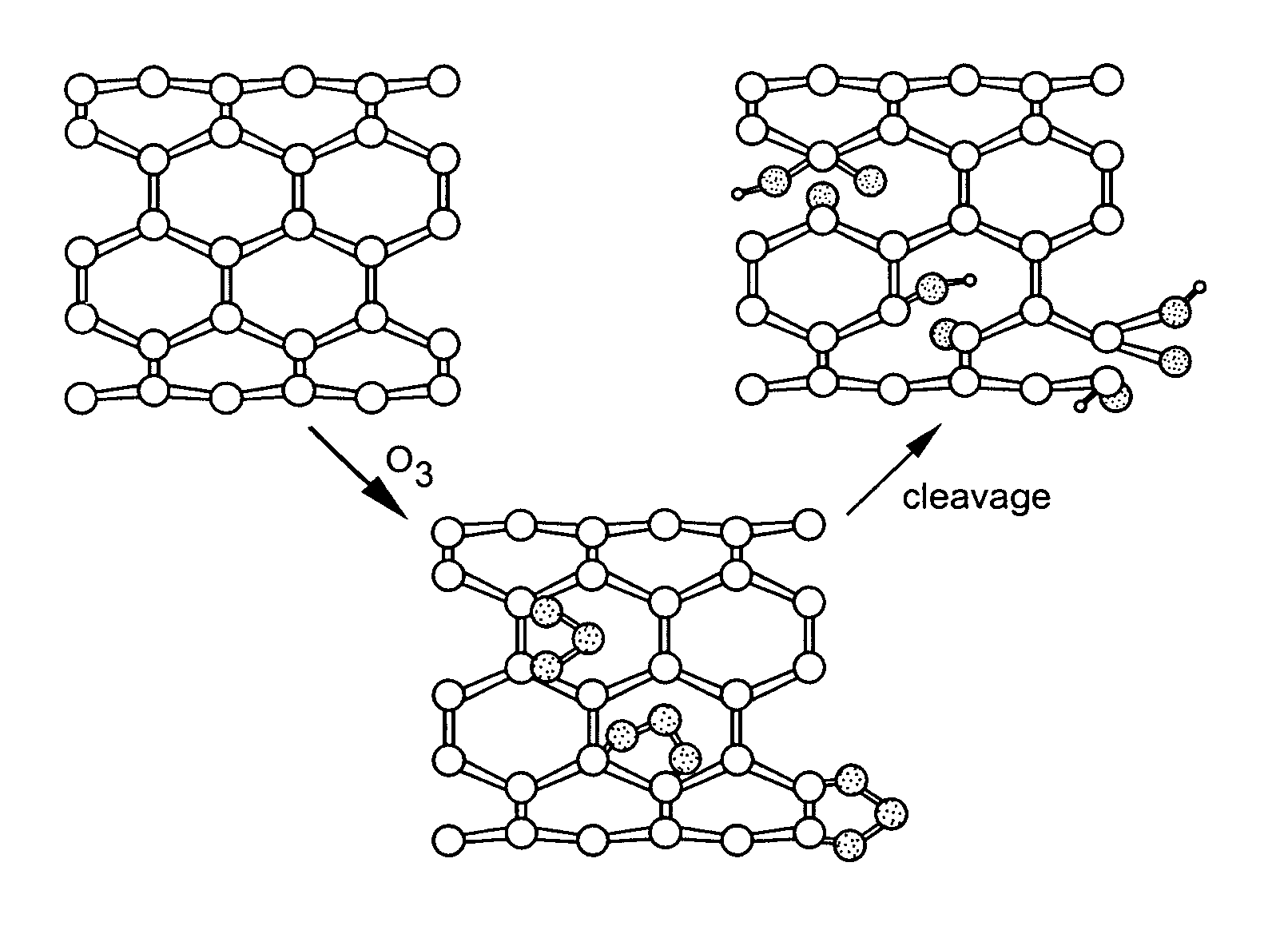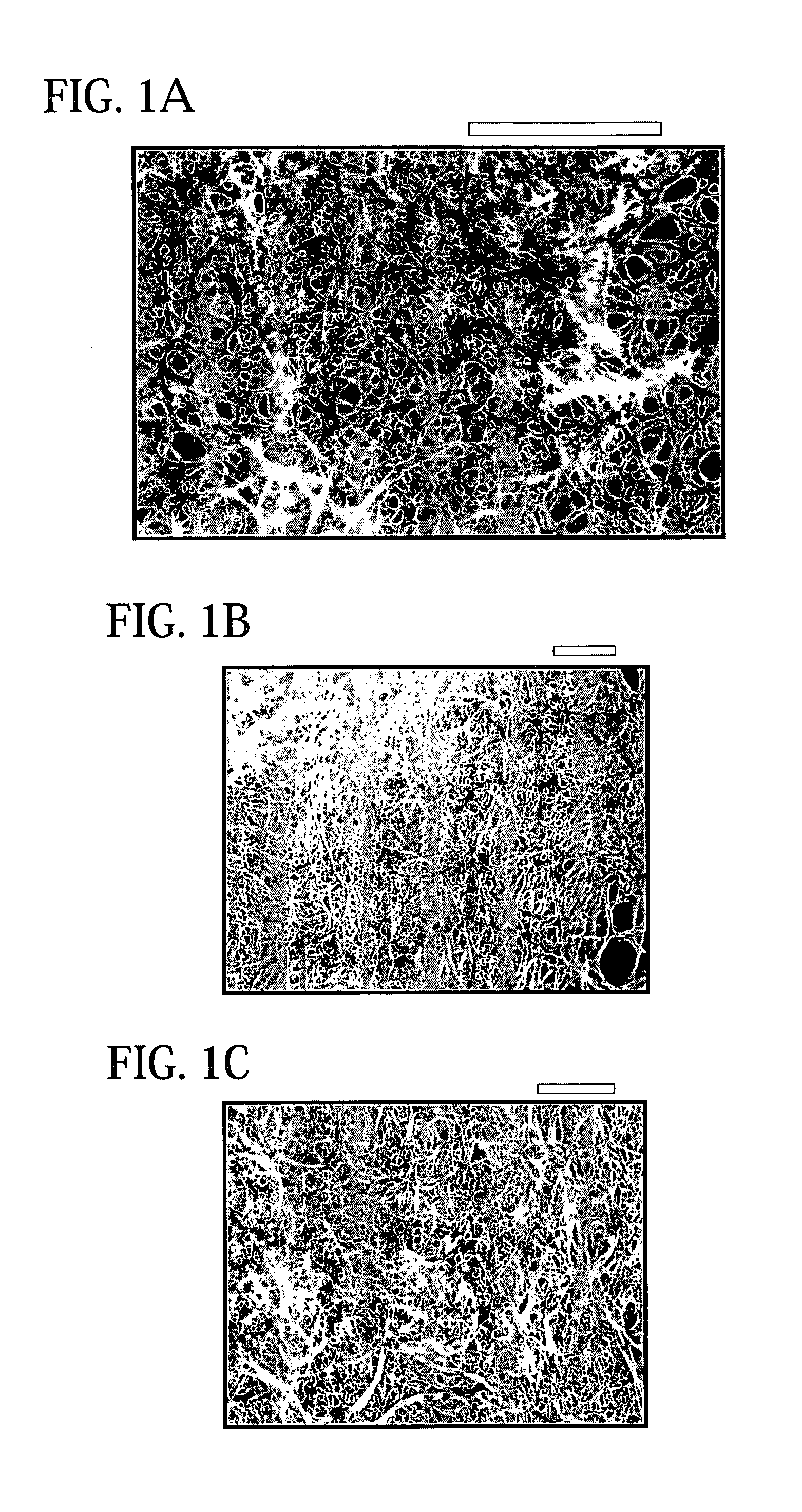Sidewall-functionalized carbon nanotubes, and methods for making the same
a carbon nanotube and sidewall technology, applied in the field of nanotechnology, can solve the problems of high carbon solubility of catalysts, interfering with their reliable and optimal use, and not being able to rationally control the type of oxygen moieties placed on nanotubes, etc., to achieve high product yield, improve the end-use applications of carbon nanotubes, and improve the effect of product yield
- Summary
- Abstract
- Description
- Claims
- Application Information
AI Technical Summary
Benefits of technology
Problems solved by technology
Method used
Image
Examples
examples
[0091]Ozonolysis of SWNTs. The ozonolysis reaction was carried out on a commercial Welsbach ozonolysis apparatus. In this instrument, the flow of O2 to the arc discharge was kept below 1.5 psi. Ozone is formed in a 185 W discharge with the pressure adjusted to maintain a constant flow of a ˜10% O3 in oxygen mixture to the sample at a pressure of under 3 psi. Typically, 100 mg of as-prepared HiPco SWNTs (Carbon Nanotechnologies, Houston, Tex.) were first dispersed in 150 mL methanol (MeOH) by extensive sonication, prior to each 1 h run. The reaction mixture was stirred vigorously during ozonolysis, which was carried out at −78° C. by placing the reaction flask in a dry ice / acetone bath, to create the expected ozonide intermediate. The reaction mixture was then flushed with O2 at the end of ozonolysis to rid the solution of any remaining O3.
[0092]Controllable Modification of Ozone-Treated Tubes. The expected primary ozonide generated can be cleaved in a number of ways by initial incub...
PUM
| Property | Measurement | Unit |
|---|---|---|
| temperature | aaaaa | aaaaa |
| temperature | aaaaa | aaaaa |
| wt % | aaaaa | aaaaa |
Abstract
Description
Claims
Application Information
 Login to View More
Login to View More - R&D
- Intellectual Property
- Life Sciences
- Materials
- Tech Scout
- Unparalleled Data Quality
- Higher Quality Content
- 60% Fewer Hallucinations
Browse by: Latest US Patents, China's latest patents, Technical Efficacy Thesaurus, Application Domain, Technology Topic, Popular Technical Reports.
© 2025 PatSnap. All rights reserved.Legal|Privacy policy|Modern Slavery Act Transparency Statement|Sitemap|About US| Contact US: help@patsnap.com



